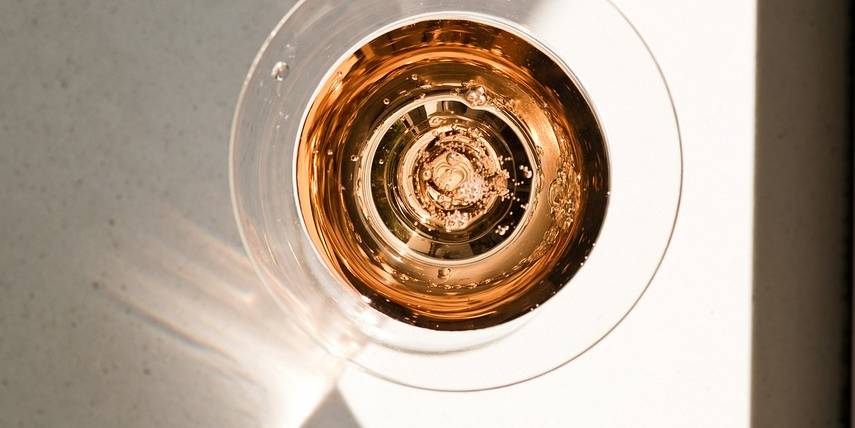Fortified wine varieties
Eva Pizarro
Sommelier en restaurante Fierro y profesora.

Fortified wines are wines with alcohol content between 15º and 23º, which is obtained by adding wine alcohol.
Fortified wines appeared in the 16th and 17th century as the result of a search for methods to preserve wine during transport from the producers in Europe to consumers elsewhere.
High alcohol content in wine can be achieved without adding more alcohol, as is the case of fondillon wine, but that is another matter that is not discussed in today's article.
Fortified wines are made using particular, specific ageing methods which confer singular characteristics to these wines.
Fortified wines can be found all around the world, but they are usually associated with Andalusian wines from: Montilla, Condado de Huelva, Jerez and Sanlúcar, the two latter being famous for their well-known sherry wines. There are other examples though, such as Dorado from Rueda, Port, Madeira, Marsala, etc.
They tend to be dry wines, but we can also find some sweet ones, in which case they are known as vins de liqueur.
Let us now take a closer look at the wines produced in Jerez:
Sherry wines have over 3000 years of history behind them, and they are one of the wine-making world's true gems.
They are produced in 9 towns in Cadiz province, but we do need to point out that they can only be aged in three municipal districts, namely Puerto de Santa María, Sanlúcar de Barrameda and Jerez de la Frontera.
That area has some very special conditions that set off their particularities:
- Three grape varieties are used, namely Palomino Fino for most dry wines, and Muscatel and Pedro Ximénez for the sweeter wines.
- Singular soil, comprising albariza soil (a white chalky soil), containing calcium carbonate and silica from marine fossils in the ocean that covered the region millions of years ago. The soil retains the winter rainfall and nourishes the vines in the hot summers.
- A singular wine-making and ageing system, including the criadera and solera systems, and biological and oxidative ageing.
Manzanilla is made exclusively in Sanlúcar de Barrameda. It is a fortified wine that undergoes biological ageing, i.e. under a film of yeast on the surface of the wine, known as velo de flor. The resulting wine is pale in colour, reminiscent of camomile flowers and unripe almonds. It is a dry, slightly salty wine, that is ideally paired with shellfish, fish, pickles, gazpacho with vinegar, etc.
Fino wines are made in the same way as manzanilla wine, but the region for ageing them is in Puerto or Jerez. This affects their character, making them paler, drier wines with hints of almond and also bread and fresh herbs. They are more powerful wines than manzanilla wine, and are therefore perfect to serve with cured ham, salted products or stronger shellfish such as sea urchins.
Amontillado are very singular wines, as they combine biological ageing under a film of yeast, and oxidative ageing when the film degrades and disappears with time, thus leaving the wine exposed to the air. This makes them very complex wines, with strong nutty flavours such as hazelnuts, and hints of old wood. They pair well with mushrooms, truffles, some vegetables such as artichokes and asparagus, and also with some meats and cheeses and oily fish such as bluefin tuna.
Oloroso wines are dry wines made exclusively using oxidative ageing, i.e. they are exposed to oxygen and its action on the wine from the beginning, unlike amontillado wine. This gives them their characteristic amber and mahogany colour, as they darken the longer they are aged. Their flavour and aroma change too. They are warm, rounded wines, very strong, with hints of nuts such as walnut with a strong woody flavour, even tobacco and spices. This makes them perfect to serve with complex sauces and gravies, meat and game stews and mature cheese.
Pedro Ximénez, unlike the previous wines we have discussed, that are made with the Palomino Fino grape variety, these wines are made using their namesake grape variety.
Pedro Ximénez grapes are sun dried in order to produce a must with a much higher sugar content, thus leading to very sweet wines.
They tend to be very dark in colour, and are exclusively subjected to oxidative ageing. They are also very thick wines. Hints of raisins, figs, dates, honey, grape syrup and fruit compote are evident in these wines.
They are perfect to serve with ice cream, cakes, dark chocolate and blue cheese.
Muscatel from Jerez is also usually made with sun dried grapes and undergoes a prolonged ageing process. This confers hints of fruit preserve, flowers such as jasmine or orange blossom and also citrus fruit and sweetness. They are perfect wines to serve with desserts such as baked fruit and cake.

These is a wide range of other wines known as Cabeceo which are basically a blend of any of the above, leading to an assortment of different choices to enjoy these wines.
Fortified wines, as the name suggests, have a relatively high alcohol content, but they are also highly flavoured and singular. So why not try some of them now that you know a little more?
What do you think about?
Share comments, opinions and tricks with the Community







